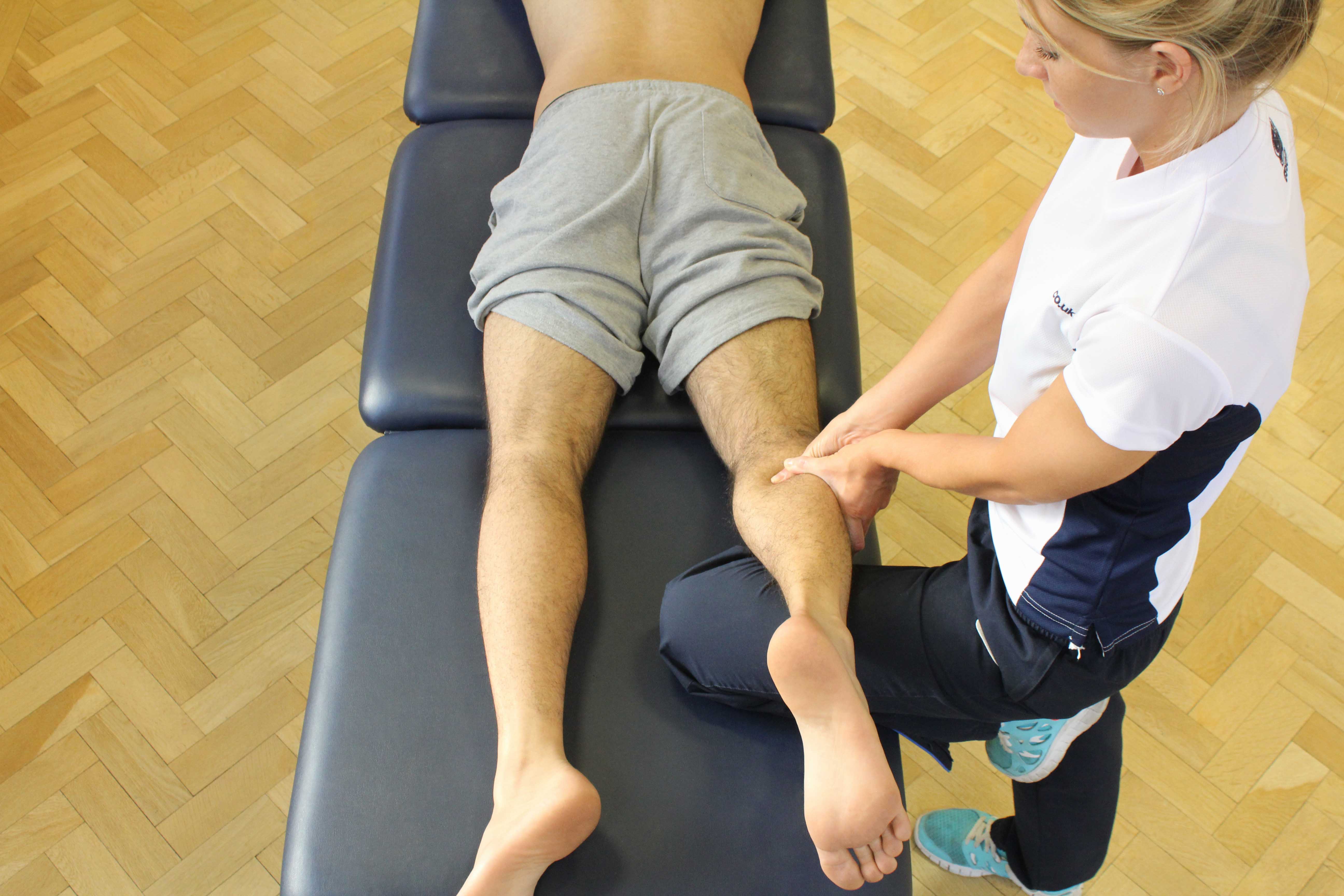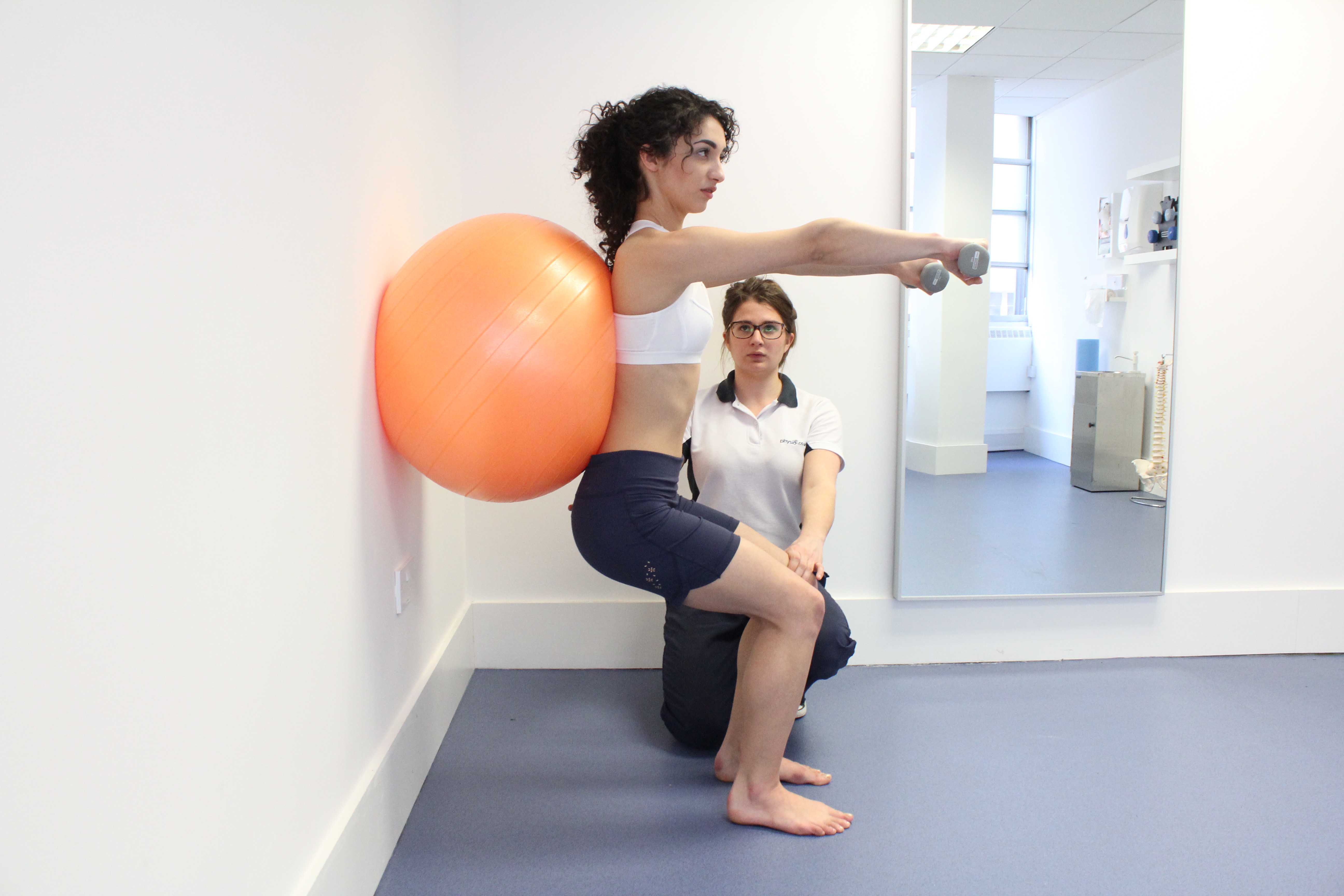What is anterior compartment syndrome?
The muscles in the lower leg are divided into a number of compartments by ‘sleeves’ of thick, inelastic connective tissue. The anterior compartment is on the outside surface of the front of the lower leg. Blood flow to this compartment is increased during exercise and, therefore, the muscles within it increase in volume (swell). If there is not enough room inside the compartment to accommodate this swelling, compartmental pressure rises. This pressure can interfere with the blood flow to the muscles and nerves in the compartment, causing pain.
Potential causes of anterior compartment syndrome include; direct trauma (causing swelling within the compartment), a muscle tear within the compartment, a rapid increase in the size and volume of the muscles within the compartment, unfamiliar vigorous exercise, or gradual tightening of the surrounding connective tissue ‘sleeve’.
Physiotherapy is an important treatment for anterior compartment syndrome.
 Above: Soft tissue massage applied to soleus muscle by specilaist therapist
Above: Soft tissue massage applied to soleus muscle by specilaist therapistWhat are the symptoms of anterior compartment syndrome?
Anterior compartment syndrome causes pain along the front of the lower leg. It is commonly described as an aching, tight, cramping or squeezing pain. The pain normally occurs during exercise and does not go away until you stop exercising. When you stop exercising, the pain gradually disappears as the muscle volume and, therefore, pressure within the anterior compartment return to normal. If the swelling causes the compression of a nerve that passes through the anterior compartment you may also experience numbness between the big and second toes and weakness in the leg.
What should I do if I have anterior compartment syndrome?
Anterior compartment syndrome can be a persistent problem unless it is appropriately diagnosed and treated. If you suspect that you may have anterior compartment syndrome you should arrange a physiotherapy appointment as soon as possible. In the meantime, you should avoid activities that bring on your pain.
What shouldn’t I do if I have anterior compartment syndrome?
If you have or suspect you have anterior compartment syndrome, you shouldn’t attempt to exercise through the pain. This can make your problem worse by causing increases in pressure within the anterior compartment.
 Above: Trigger point massage applied to gastrocnemius muscle by specilaist therapist
Above: Trigger point massage applied to gastrocnemius muscle by specilaist therapistPhysiotherapy for anterior compartment syndrome.
Physiotherapy is important in the treatment of anterior compartment syndrome. Initially, your physiotherapist can diagnose your injury and its severity. Subsequent treatment sessions may include: In some cases, surgery to cut the ‘sleeve’ of connective tissue surrounding the compartment is necessary, to relieve the pressure and allow the muscle to expand during exercise without increasing pressure.
Could there be any long-term effects from anterior compartment syndrome?
Anterior compartment syndrome does not produce any long-term effects, as long as it is properly diagnosed and appropriately treated.
 Above: Leg strengthening exercises using squats and a gym ball with hand weights, under supervision of specialist MSK physiotherapist
Above: Leg strengthening exercises using squats and a gym ball with hand weights, under supervision of specialist MSK physiotherapistTo arrange an assessment with a specialist physiotherapist call Physio.co.uk on 0330 088 7800 or book online.

 0330 088 7800
0330 088 7800


































